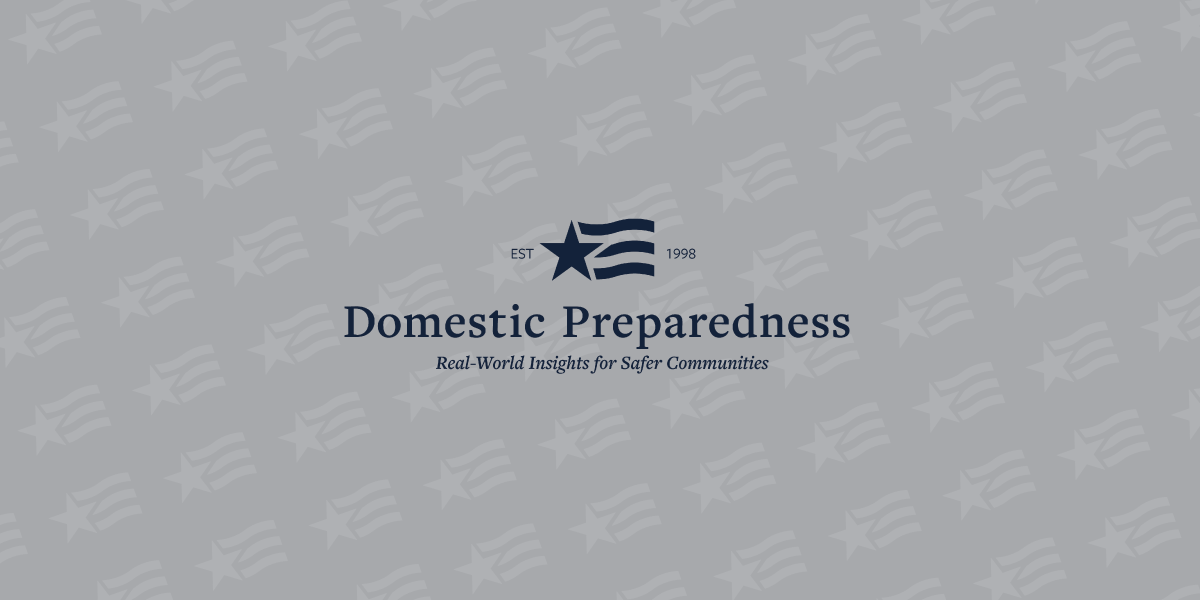A firefighter is making a careful but nonetheless dangerous room-by-room search of a burning building when the roof suddenly collapses. A police officer is shot while carrying out a supposedly “routine” traffic stop. A paramedic is struck by a passing car at the scene of an auto accident.
In addition to the personal and emotional effects that these and similar tragedies have on the responders involved, and their families, such incidents also pose difficult planning and operational challenges for the responder agencies of each of these front-line professionals.
The death or severe injury of an agency member is one of the most difficult situations for other members, and agency leaders, to face. Although the many steps required to protect on-the-scene responders may be weighty in effort, political capital, and expense, providing a safe work environment is and should be the first and most important responsibility of any senior leader – in any agency of government, or in the private sector.
The agency involved almost always has numerous (and often competing) priorities and responsibilities to take into consideration. Nonetheless, the central and most obvious factor in meeting the all-important goal of providing and continuously improving workplace safety for staff is understanding events such as those listed above and the conditions that led up to each such incident. Fortunately, there is a relatively simple but not always easy two-step process that managers should follow. The first step is to immediately (if possible) carry out an initial analysis of what happened prior to the occurrence of such tragic events; the goal, of course, is to take whatever actions are needed to avoid similar injuries or deaths in the future. The second step is to carry out an in-depth and totally objective review of the specific incident being investigated.
Statutory Investigations & Agency Involvements
Law enforcement agencies and/or the medical examiner’s or coroner’s office will probably have the principal responsibility of carrying out the formal investigation of a death; but that responsibility might sometimes be assigned to the National Transportation Safety Board (in the case of aircraft and/or some, but probably not all, traffic-related events). Other agencies, depending on the circumstances involved, may also have a statutory responsibility to investigate. In addition, certain events (terrorist attacks, for example, or attempted assassinations) may require a separate investigation by local, state, or even federal agencies and/or specially appointed commissions.
Although it is important that the agency directly involved review such incidents, it is at least equally important that such review not obstruct any statutory investigations required, if only because the agencies assigned responsibility for a statutory review usually possess (or should possess) the authority, resources, and experience required to carry out the primary investigation. In addition, once the statutory review is completed, the reports generated by these primary investigations can be a rich source of information to other agencies carrying out their own reviews and investigations.
The purpose of an agency review differs from other investigations in that the primary goal of the agency review is to id identify opportunities for systemic and/or policy improvement. In a case where the risk was previously recognized and planned for, and the safety plans were in fact adhered to, an analysis of the event still must be made to determine why those plans did not work to ensure the safety of the deceased or injured member of the agency. Some circumstances, of course, may justify deviations from so-called standard operating procedures; in that case, the existing plans should be modified to encompass such non-SOP possibilities.
If it turns out that the threat was a previously unrecognized risk, the results of the investigation should lead to the development and implementation of new plans – and/or, if necessary, even some equipment or policy changes – to reduce the risk of similar deadly results from future incidents. An agency review may also identify other issues that should be addressed – more effective and/or more frequent training drills for members, to cite one obvious example. It also should be remembered, and taken into consideration, for example, that a member cannot conform to a plan if he or she is unaware of its existence. Likewise, additional training would likely be needed if a new or modified plan is generated by the investigative process.
Human nature being what it is, there is often an understandable temptation to use an investigation to determine the possible culpability of a team member, or anyone with supervisory responsibility, for what has happened. Obviously, the question of who is or may be “at fault” should be determined, if possible, but a continuing and primary focus on that question also can become a barrier to frank and honest discussion of all aspects of the incident and can be counterproductive to achieving what should be the agency’s primary goal: improving the process and, by doing so, upgrading overall safety in general.
The unspoken truth about many tragic events such as those mentioned above is that carrying out an emergency response is an inherently risky proposition. Those who plan for response operations are not in the business of eliminating all risks – an obviously impossible task – but, rather, controlling or mitigating the risk to the maximum extent possible. In order to do that, planners must: (a) fully understand all of the risks involved; (b) identify and implement the short- and long-term plans needed to mitigate those risks – again, to the maximum extent possible; and (c) stay focused on what should be, at all times, their highest priority – namely, creating a safer work environment for the front-line responders who routinely face the possibility of death or serious injury.

Joseph Cahill
Joseph Cahill is the director of medicolegal investigations for the Massachusetts Office of the Chief Medical Examiner. He previously served as exercise and training coordinator for the Massachusetts Department of Public Health and as emergency planner in the Westchester County (N.Y.) Office of Emergency Management. He also served for five years as citywide advanced life support (ALS) coordinator for the FDNY – Bureau of EMS. Before that, he was the department’s Division 6 ALS coordinator, covering the South Bronx and Harlem. He also served on the faculty of the Westchester County Community College’s paramedic program and has been a frequent guest lecturer for the U.S. Secret Service, the FDNY EMS Academy, and Montefiore Hospital.
- Joseph Cahillhttps://domprep.com/author/joseph-cahill
- Joseph Cahillhttps://domprep.com/author/joseph-cahill
- Joseph Cahillhttps://domprep.com/author/joseph-cahill
- Joseph Cahillhttps://domprep.com/author/joseph-cahill






